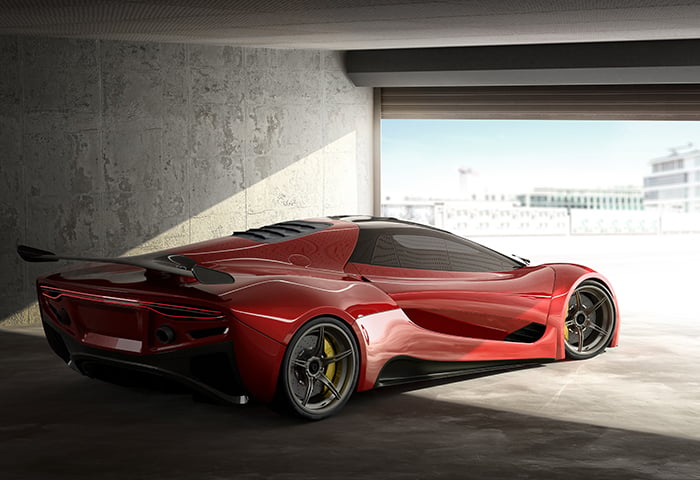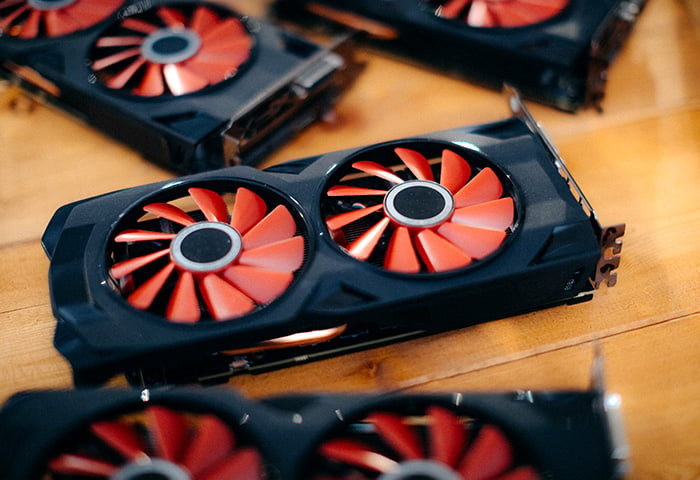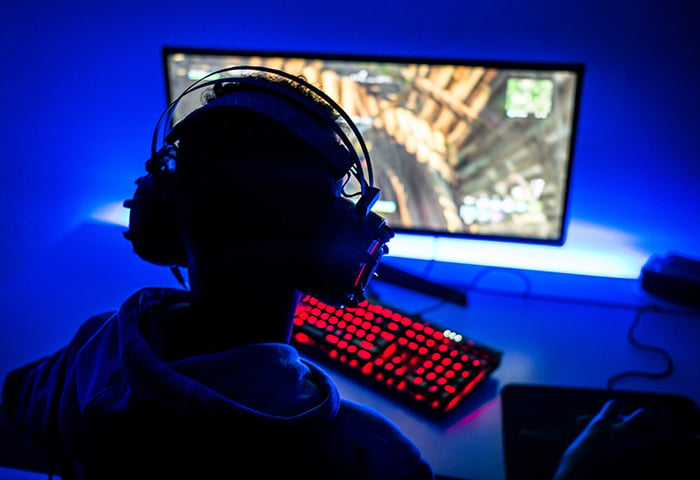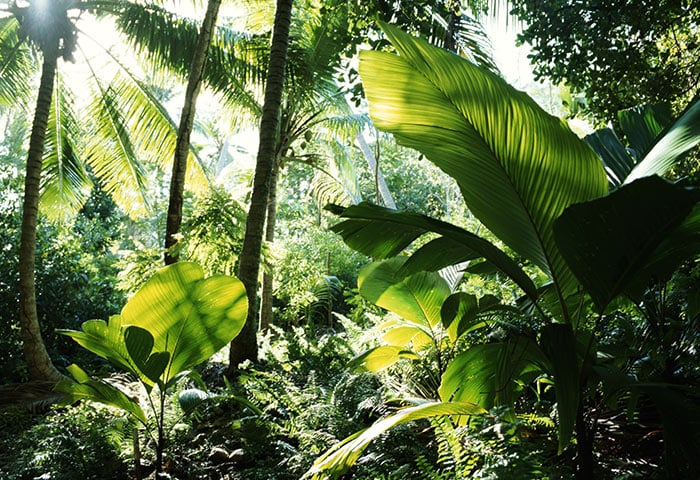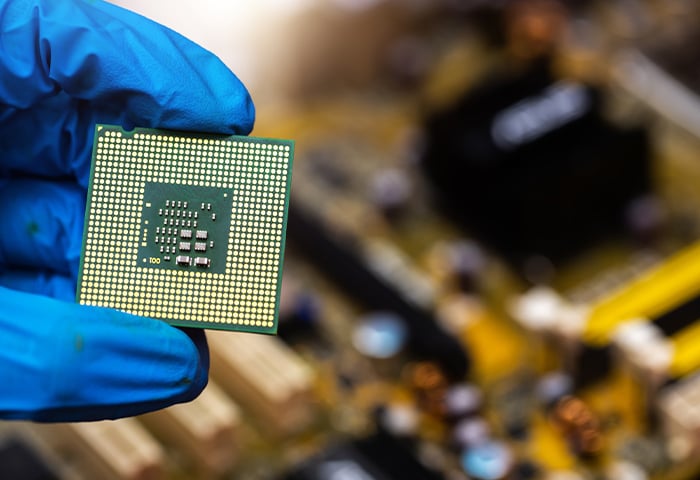Welcome to the ultimate guide to optimizing Ark: Survival Evolved, including all launch options, launch commands, the best graphics settings, tips for boosting FPS, and even hidden tweaks. Let’s dive right in.
Why is Ark so poorly optimized?
Many users struggle with Ark’s performance stutters, low FPS (frames per second), and graphical glitches. Ark is a highly unoptimized game, as even high-end hardware often isn’t able to achieve a smooth 60 FPS or even a stable 30 FPS.
On 4K Epic settings, Ark brings even the most powerful PCs to their knees. On a brand-new gaming PC running Intel’s tenth-gen 10900K CPU overclocked to 5.3 GHz, 16 GB of 4266 MHz RAM, and two Titan Xp GPUs, the game varies between 40 and 55 FPS — not exactly a fun experience. One time it’s buttery smooth, and then you turn the camera and it’s a stutter-fest.
 A screenshot from Ark: Survival Evolved.
A screenshot from Ark: Survival Evolved.
Oddly, the game itself isn’t anything like the Crysis of this generation — its graphics aren’t particularly advanced. My PC can run any modern game, including the remake of Resident Evil 3, Doom Eternal, Grand Theft Auto 5, and Dark Souls 3 at 4K with maximum details at 60 FPS, and these games arguably look a whole lot better.
So what gives? Ark’s poor performance stems from problems in its code, as it’s not optimized enough to run smoother. The size of Ark’s development and QA teams is unknown at this point, but the game hasn’t been supported to the degree of an AAA title like The Witcher 3 or Resident Evil 3.
Unfortunately, there’s nothing you can do about it other than fine-tune the settings, which is what we’re here for!
What are the Ark system requirements?
The minimum requirements sound relatively fair:
-
OS: Windows 7/8.1/10 (64-bit versions)
-
Processor: Intel Core i5-2400/AMD FX-8320 or better
-
Memory: 8 GB RAM
-
Graphics: NVIDIA GTX 670 2GB/AMD Radeon HD 7870 2GB or better
-
DirectX: Version 10
-
Storage: 60 GB available space
We tried playing the game on a very similarly specced gaming PC from around 2012, and barely managed 30 FPS on sub-HD resolutions. We had to dial everything all the way back down to make it playable. You really want at least a sixth-gen processor and a 980 Ti or 1080 Ti to play it at Full HD at more than 60 FPS. For 1440p and high frame rates, you’ll need at least a 2070 or 2080 Super at the best possible settings.
Step up the resolutions and things become very difficult: 4K with at least 60 FPS is currently only possible with two Titan RTX or 2080 Ti cards running in tandem. With a less powerful setup, you’d need to sacrifice visual fidelity.
Ark launch options
You can squeeze more performance or fidelity out of Ark by using some command options. Add them to the game using the various game launchers and platforms:
On Steam, go to your library, right-click on ARK: Survival Evolved, select Properties and click on Set Launch Options.
On Epic, click the little Settings cog under ARK to open the settings. Scroll all the way down until you see Advanced Command Line Arguments.
Here’s a list of the best ones you can and should use:
-
Sm4: Forces a simpler shade model that lowers the graphical fidelity. In our tests, this improved the frame rate by about 25%, but it also made the game look significantly worse. This command also weakens the lighting effect of torches and other elements in the game. Use this only if you have no choice, and use it along with the d3d10 switch below.
-
d3d10: Forces the game to use DirectX 10 instead of 11 to boost performance at the cost of graphics.
-
high: Forces high CPU priority, which might give you extra FPS. However, as discussed in this article, Ark isn’t a CPU-bound game, so unless you’re running tons of background applications, this command won’t do much. But it doesn’t hurt to have it on!
-
nomanssky: Removes sky details, which will make the heavens look quite bland while possibly squeezing out more FPS. In our tests, this gave us a boost of 1–2 FPS, but we’re running it on a higher-end PC. Your mileage may vary.
-
lowmemory: Lowers a few settings to make the game run on PCs with “only” 4 GB of RAM.
How do I improve gameplay performance?
Let’s get down to the nitty-gritty: It’s time to get the FPS boost you deserve to make Ark run better. First of all, we encourage you to walk through our ultimate guide to speeding up your gaming PC. You’ll learn how to:
-
Update and overclock your GPU.
-
Boost performance with AVG TuneUp’s dedicated Sleep Mode to reduce background usage.
-
Configure and tweak Windows settings.
-
Optimize GPU driver settings.
This should ensure that your PC isn’t causing any stuttering or lagging while you play Ark. Now let’s fine-tune your Ark optimization.
Let’s start with the basics: The graphics settings!
 Here are the most important settings, what they mean, and how they’ll affect FPS and graphical quality:
Here are the most important settings, what they mean, and how they’ll affect FPS and graphical quality:
1. Resolution
Resolution is the setting with the highest impact on performance. It’s best to run the game at your monitor’s resolution as occasionally, non-native resolutions can cause lags, washed out colors, or a fuzzy image.
So if your screen is running at a native 1080p or 1440p, then that’s what you should use. You can figure out the native resolution by right-clicking on your desktop and selecting Display Settings. Find the Recommended entry under Display Resolution. That is your monitor's native resolution! While this will make the game the crispest, it might be too demanding on your hardware, which is where the Resolution Scale setting comes in:
While this will make the game the crispest, it might be too demanding on your hardware, which is where the Resolution Scale setting comes in:
This will allow you to lower the game’s rendering resolution while still keeping the actual resolution at your monitor's native resolution. Your game may look a bit fuzzier, but it won’t require your display to run at a resolution it doesn’t support.
2. Graphics Quality
These presets give you an easy way to adjust graphical quality.
Low: Medium:
Medium: High:
High: Epic:
Epic: After selecting your resolution and graphics settings, consider making a few internal sweeps to speed up your computer and improve its performance. AVG TuneUp effortlessly removes junk data and disables unnecessary programs that siphon off your CPU’s power, making sure your gameplay performance is properly dialed in.
After selecting your resolution and graphics settings, consider making a few internal sweeps to speed up your computer and improve its performance. AVG TuneUp effortlessly removes junk data and disables unnecessary programs that siphon off your CPU’s power, making sure your gameplay performance is properly dialed in.
What settings should I play Ark on?
Epic runs at an average of 60 FPS on a high-end gaming rig from 2020 after proper optimization, but occasionally dips into the 50s. High goes up to 80 FPS on 4K (3840 x 2160) resolution. Medium delivers a stunningly fast 100fps while Low gives 160 FPS.
Looking at the visual difference in the shots above, Epic surely does give you more detailed water, grass details, and shadows. But when you’re in the thick of it, there is not much difference between Epic and High. If you don’t have the horsepower to spare, I would recommend High, unless you’re playing on an older PC.
Detailed Ark settings explained
Obviously, the list of settings can be fully customized to your liking. Let’s look at the most important settings:
-
Window mode: Choose Fullscreen here, otherwise your GPU will need to render both Windows and your game. This has an impact of almost 20% on my gaming PC.
-
V-Sync: Turning off the V-Sync feature allows you to run the game at the maximum possible framerate, but it might introduce visual screen tearing. To keep things running smoothly, enable V-Sync as it will synchronize the game’s FPS to your monitor’s maximum refresh rate.
-
Anti-Aliasing: This smoothes over jagged edges in the game. If you’re running the game on 1080p or lower, definitely use High or Epic settings here if your GPU can handle it. On 1440p or 4K resolutions, the pixel density is super high — so unless you’re sitting right in front of the screen, there’s no need to use the highly taxing Epic setting.
Is Ark GPU- or CPU-intensive?
Ark is an interesting case as it is almost always GPU-bound: Even when you use low quality settings at low resolutions (720p), Ark consumes around 50% of the graphics processing power on a powerful NVIDIA GeForce Titan Xp, while the CPU hovers at around 10%.
If we increase the resolution to 4K and Epic details, our CPU usage averages at around 14%, while the GPU is fully utilized usually between 90 and 99%.
Note that this was taken on a Core i9 10900k with 10 cores running at up to 5.3 GHz, so your CPU usage might be higher on slower processors. (Learn how to stress test your CPU here.) In either case, your GPU will always be the bottleneck.
Keep in mind that background applications can have an impact on performance. Make sure to hibernate all programs that might interfere with Ark using AVG TuneUp:
How overclocking improves FPS
While CPU overclocking will not have much impact, overclocking the GPU will definitely affect your frame rate. I was able to get my frame rate up from an average of 54 FPS to over 60 FPS by giving the GPU +150 MHz and the memory +500 MHz. Check out our articles on overclocking CPUs and overclocking GPUs for more!
Whenever you’re overclocking, keep an eye on your CPU temperature. Overclocking creates excess heat, which can introduce additional performance slowdowns.
Tune up your computer for optimal gaming performance
Now that you’ve optimized your Ark graphics settings, launch options, and launch commands, you’re ready to move on and start your quest for survival. But remember that the best performance tweaks won’t automatically give you crisp gameplay if your PC isn’t delivering a premium gaming experience.
AVG TuneUp ensures that all your computer’s resources are dedicated to delivering the ultimate gaming session. Excise CPU-hogging bloatware and treat your drive to a deep-clean, so that no matter what computer you have, ARK: Survival Evolved will play beautifully.

 A screenshot from Ark: Survival Evolved.
A screenshot from Ark: Survival Evolved. Here are the most important settings, what they mean, and how they’ll affect FPS and graphical quality:
Here are the most important settings, what they mean, and how they’ll affect FPS and graphical quality: While this will make the game the crispest, it might be too demanding on your hardware, which is where the Resolution Scale setting comes in:
While this will make the game the crispest, it might be too demanding on your hardware, which is where the Resolution Scale setting comes in:
 Medium:
Medium: High:
High: Epic:
Epic: After selecting your resolution and graphics settings, consider making a few internal sweeps to
After selecting your resolution and graphics settings, consider making a few internal sweeps to 
